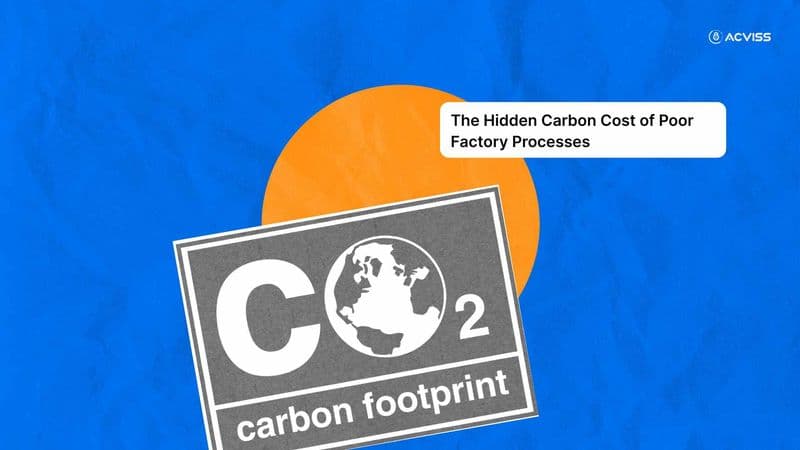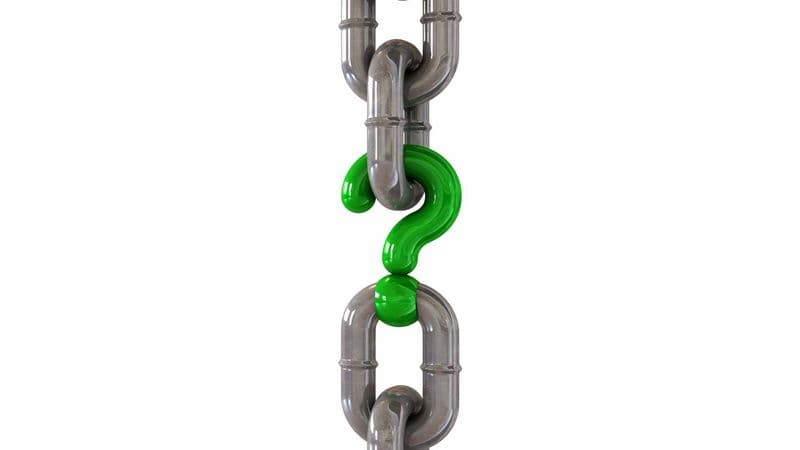A Complete 2025 Guide to Prevent Hidden Carbon Costs in Factory Operations

Factories are under more pressure than ever to cut emissions, reduce waste and comply with new sustainability regulations. Most manufacturers focus on the visible sources of emissions like electricity usage, fuel consumption or logistics. But the truth is far more complex. The largest part of your carbon footprint is hidden inside everyday operations that appear harmless: inventory mistakes, warehouse inefficiencies, poor supplier practices and repeated quality failures.
These invisible inefficiencies quietly inflate your carbon footprint, disrupt supply chain flow and increase operational cost. You may not see them immediately, but they show up in your ESG score, audit results and export readiness. As 2025 regulations tighten, ignoring these hidden carbon leaks is no longer an option.
This guide breaks down what manufacturers need to know and offers a practical framework to improve efficiency, meet global regulations and uncover the “silent emissions” inside factory processes. We also explore how traceability solutions like Acviss Origin can help reduce waste and strengthen sustainability reporting.
The Carbon Cost No One Is Measuring
Manufacturers often calculate emissions through direct fuel usage or electricity consumption, but those are only Scope 1 and Scope 2 emissions. The real danger lies in Scope 3, which accounts for the majority of a company’s environmental footprint. Several global studies estimate that Scope 3 emissions are 26 times higher than Scopes 1 and 2 combined.
These emissions come from upstream and downstream activities, supplier inefficiencies, recalls, rework cycles, overproduction, warehouse waste and even unsold inventory. Every quality failure, every emergency shipment and every supplier mismatch quietly adds to the load.
Most companies see only a fraction of these activities. On average, manufacturers track as little as 6% of their total supply chain. This limited visibility means they miss upstream waste, supplier noncompliance, redundant material movement and recurring defects that result in significant carbon leaks.
Without visibility, sustainability becomes guesswork. And guesswork does not pass audits anymore. It’s time to fix this.
Where Hidden Factory Emissions Actually Come From
Hidden emissions do not come from one big mistake. They accumulate slowly across everyday processes. Below are the most common areas where manufacturers unintentionally increase their carbon footprint.
Inefficient Warehousing
Warehouses are often overlooked when calculating carbon emissions. Yet they contribute an estimated 8% to 12% of total supply chain emissions.
Typical inefficiencies include:
- Disorganised layouts that force forklifts to travel more than needed
- Idle time from poor scheduling
- Overuse of heating or cooling
- Manual picking processes that increase movement and labour
- Redundant movement of pallets due to miscommunication
These issues increase operational time, energy usage and fuel consumption. Over a year, the hidden carbon footprint can be significant.
Weak Inventory Tracking
Inventory distortion costs global businesses more than 1.8 trillion dollars every year. But the environmental impact is even worse.
Poor tracking leads to:
- Overproduction
- Expired or spoiled raw materials
- Wasted batches
- Emergency shipments produce 100 times more emissions than planned transportation
Even a small 5% inventory mismatch can cause large-scale waste that compounds over time.
Quality Control Gaps
Quality failures are often treated as a financial problem. On the flip side, faulty batches also cause the highest carbon costs.
When a batch fails, you waste:
- Raw materials
- Production energy
- Transportation
- Packaging
- Storage
- Labor
A defective batch can produce 3 to 6 times the emissions of a successfully manufactured one. If recalls are involved, the footprint increases even further.
Supplier Blind Spots
Upstream suppliers contribute between 70% and 90% of a brand’s total emissions.
If you cannot see:
- Where raw materials are sourced
- How suppliers manage waste
- Whether they follow sustainable practices
- Whether their own suppliers are compliant
Then your sustainability reports are inaccurate. Worse, your brand becomes accountable for supplier emissions you did not even know existed.
The Real Carbon Cost of Poor Inventory, Warehousing and Quality

Let’s take a look at the real cost of carbon caused due to poor inventory, warehousing and quality control. These are not just operational issues. They have direct financial and environmental consequences.
Inventory Distortion
• 1.8 trillion dollars lost globally
• Increased landfill waste
• Higher carbon emissions due to overproduction
• Increased carrying cost and unused capacity
Warehousing Inefficiencies
• Significant energy loss
• Increased fuel consumption
• Additional maintenance on machinery
• Poor flow planning that increases operational emissions
Quality Failures
• Remanufacturing increases emissions several times
• Batch disposal adds methane emissions
• Reverse logistics amplifies transportation emissions
• Noncompliance penalties and customer distrust
These problems escalate fast, especially in export-driven sectors like FMCG, chemicals, pharmaceuticals, textiles and electronics.
Why Carbon Cost Matters in 2025: Sustainability and Compliance Pressure
Manufacturers are operating in a new landscape where sustainability is no longer optional. Global regulations require detailed reporting, full traceability and proof of responsible manufacturing.
EUDR
The European Union Deforestation Regulation requires full traceability to the origin of materials. Non-compliance leads to market bans and fines up to 4% of revenue.
CBAM
The Carbon Border Adjustment Mechanism introduces carbon-linked taxes on imports. Manufacturers with high carbon footprints will pay significantly more.
EPA and other national regulations
Environmental protection agencies now enforce stricter emissions guidelines and reporting standards for factories.
Buyer and investor pressure
Global buyers demand sustainability documentation before procurement. ESG scores directly influence contracts and long-term partnerships.
Sustainability is now an operational requirement, not a branding exercise.
What Better Processes Actually Solve
Fixing factory operations reduces far more than just emissions. It improves business efficiency.
Improved processes:
- Reduce surplus production
- Lower warehouse energy consumption
- Minimise spoilage and rework cycles
- Cut down emergency shipments
- Improve supplier accountability
- Streamline quality checks
- Improve regulatory readiness
- Strengthen export competitiveness
Better processes reduce cost, improve profitability and increase sustainability.
Advanced Traceability: The Missing Link in Carbon Reduction

Manufacturers cannot fix what they cannot see. This is where digital traceability becomes critical.
Advanced traceability systems allow factories to:
• Monitor materials from source to production
• Track inventory movement in real time
• Identify bottlenecks and waste-generating processes
• Validate supplier compliance
• Spot counterfeit products early
• Provide accurate Scope 3 data
• Support EUDR and global due diligence requirements
Traceability gives manufacturers the visibility needed to reduce hidden carbon emissions and improve sustainability reporting.
How Acviss Origin Helps Reduce the Hidden Carbon Cost
Origin by Acviss is a traceability and lifecycle management platform that helps manufacturers gain control of their supply chains without overhauling existing systems.
What Origin Enables
• End-to-end traceability from raw material to shipment
• Serialisation and QR-based tracking for every product
• Blockchain-secured records that prevent tampering
• Real-time visibility dashboards for quality, logistics and supplier performance
• Full documentation to support EUDR and sustainability audits
Impact
• Up to 40% reduction in process waste
• 30 to 50% improvement in detecting inefficiencies
• Stronger supplier reporting
• 60% fewer counterfeit-related disruptions
Origin strengthens sustainability, compliance and carbon reporting with a single platform.
A Practical Framework to Reduce Hidden Carbon Emissions
Here is a step-by-step approach manufacturers can use starting today.
Step 1: Conduct an Operational Carbon Audit
• Identify high-emission processes
• Evaluate rework rates and rejected batches
• Track emergency logistics frequency
• Assess warehouse and inventory waste
Step 2: Improve Warehouse Operations
• Optimise layout flow
• Reduce unnecessary movement
• Use demand-based climate control
• Integrate warehouse management and tracking
Step 3: Strengthen Quality Control
• Automate visual and batch inspections
• Digitise batch records
• Implement serialisation for each unit
• Track defect patterns
Step 4: Improve Supplier Oversight
• Evaluate supplier waste, rework and quality performance
• Use traceability for upstream accountability
• Enforce data-sharing agreements
• Conduct regular compliance audits
Step 5: Implement Digital Traceability
• Track raw materials to finished product
• Identify carbon-heavy processes
• Reduce risk of recalls or diversion
• Build transparent ESG reporting
Better visibility leads to better decisions, lower emissions and stronger sustainability outcomes.
Conclusion
Most manufacturers are working hard to reduce emissions, but the biggest carbon leaks are not in fuel or electricity. They are hidden inside everyday factory processes that are easy to overlook. Inefficient warehousing, inventory errors, supplier gaps and quality failures add tonnes of unnecessary emissions every year.
Fixing these process flaws is one of the most effective ways to improve sustainability, reduce cost and strengthen export readiness. With global regulations tightening and customers demanding proof of responsibility, manufacturers cannot afford blind spots anymore.
Traceability is no longer optional. It is the foundation of sustainable manufacturing. And tools like Acviss Origin make it possible to monitor operations, eliminate waste and build a supply chain that is both secure and environmentally responsible.
Frequently Asked Questions
1. Why do factory processes contribute so much to carbon emissions?
Factory emissions do not come only from power or fuel. Most emissions come from wasteful processes like overproduction, poor warehouse planning, inventory mismatch and supplier inefficiencies. These activities generate repeated energy usage, rework and transport, which significantly increase carbon output.
2. How does poor inventory management increase carbon footprint?
Inventory errors lead to overproduction, emergency shipments, expired stock and wasted raw materials. These activities collectively produce far higher emissions than planned production cycles. Even small mismatches can create large-scale environmental impact.
3. How can traceability help reduce hidden factory emissions?
Traceability gives manufacturers real-time visibility into material movement, supplier practices and process inefficiencies. It allows teams to detect waste early, prevent rework, reduce recalls and ensure accurate sustainability reporting, all of which reduce carbon emissions.
4. What is the role of suppliers in hidden carbon cost?
Suppliers contribute up to 90 per cent of a brand’s total emissions. If their processes are inefficient or unsustainable, your brand becomes responsible. Without visibility into upstream operations, it is impossible to calculate or reduce your true carbon footprint.
5. How does Acviss Origin support sustainability initiatives?
Acviss Origin provides end-to-end traceability, serialisation and blockchain-secured authentication that reduces waste and operational inefficiency. It supports compliance with sustainability regulations like EUDR and helps manufacturers achieve accurate Scope 3 reporting across the supply chain.
